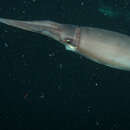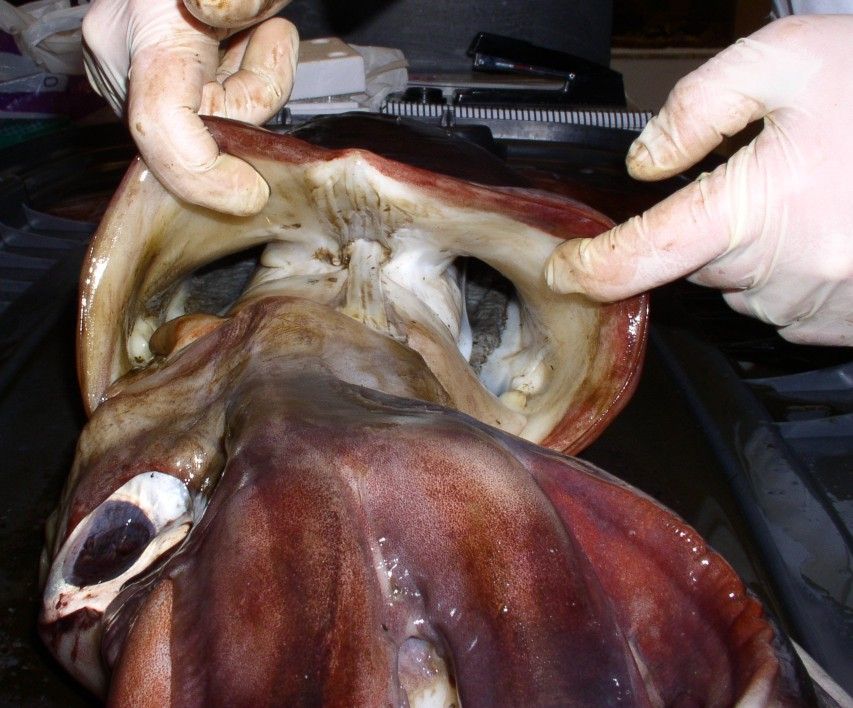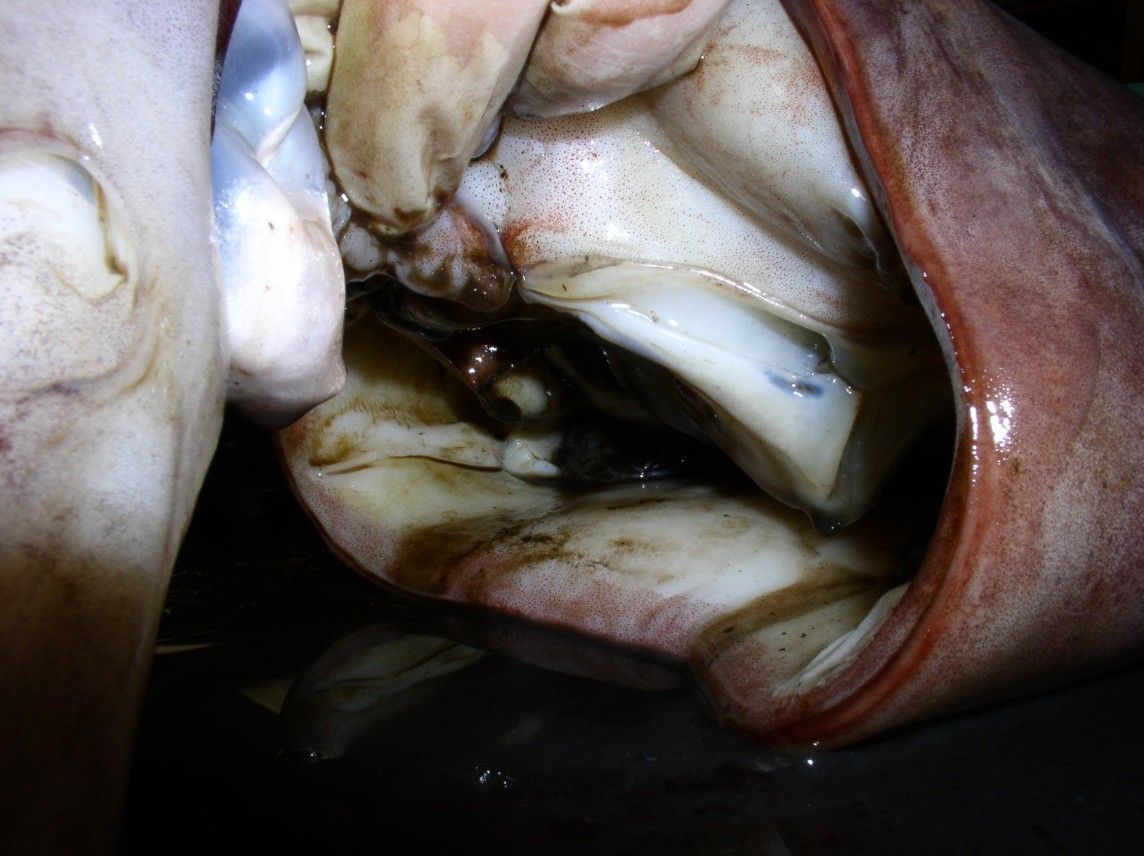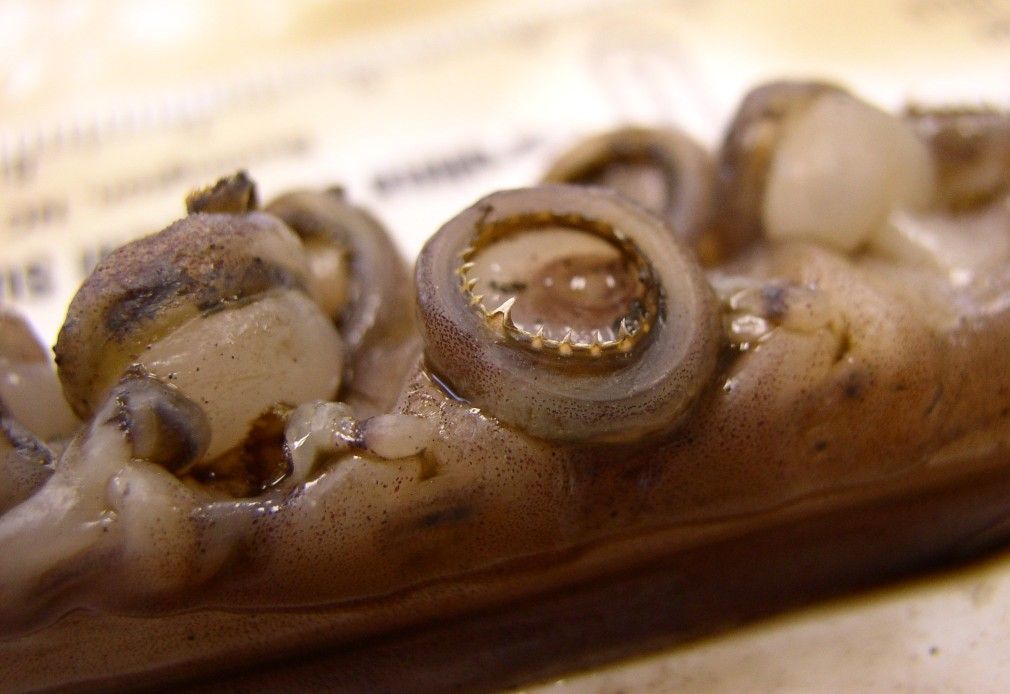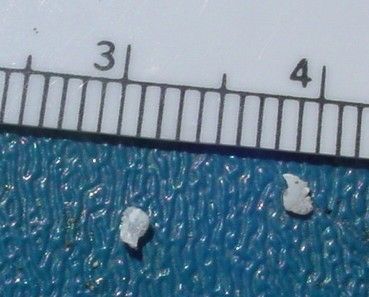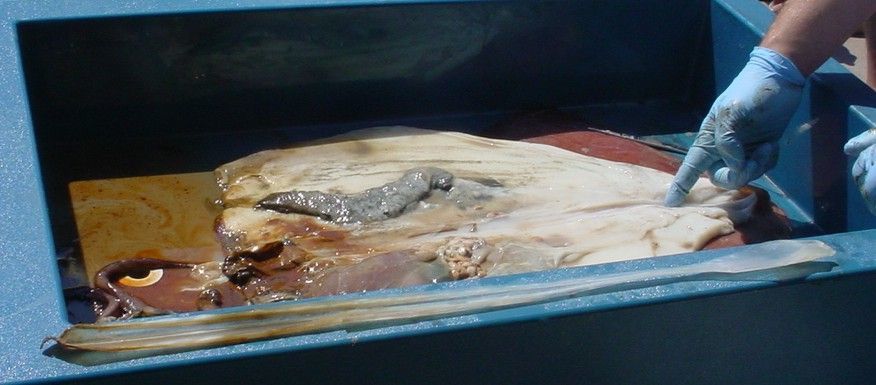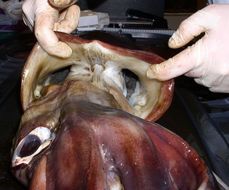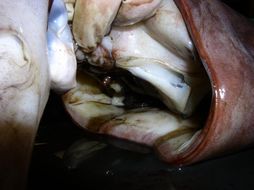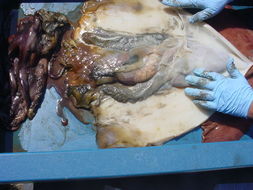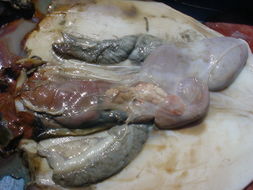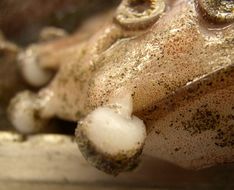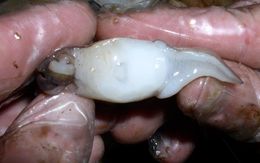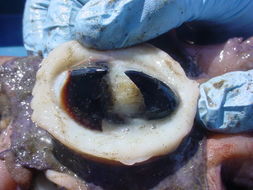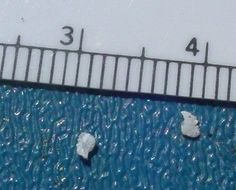-
This view shows the 8 arms and 2 tentacles characteristic of squids. Photo by Kirt Onthank
-
This view shows the attachment along the dorsal margin of the mantle. Photo by Kirt Onthank, 2009
-
The ventral margin of the mantle is not tightly attached to the body. Photo by Kirt Onthank, 2009
-
When the mantle cavity is opened the two gills can be readily seen. In the photo above, the opening to the mantle cavity is to the left. Water is sucked into the rear of the mantle cavity (to the right), then blown back out across the featherlike gills which can be seen above and below. The visceral mass is visible between the gills. This individual washed up on a beach at Seaside, Oregon, so there is some sand in the gills. Photo by Dave Cowles, July 2009
-
This closer view shows the esophagus extending to from the left to the spiral cecum and stomach on the right. Photo by Dave Cowles, July 2009
-
The tentacle clubs have suckers with no teeth. Notice the toothed ring from another (arm) sucker on the upper left. Also notice that the proximal part of the tentacle (to the right) is not covered by suckers. Photo by Kirt Onthank, 2009
-
The suckers are on pedicels (stalks). Photo by Kirt Onthank 2009
-
Some of the suckers contain a ring of teeth. The scale in the background is millimeters. Photo by Kirt Onthank, 2009
-
The arms are angular in cross section. Photo by Kirt Onthank, 2009
-
The beak appears similar to a parrot's beak. The roots of each beak, however, extend well back into the buccal mass (the white mass of muscle around the beaks here), becoming wider, softer, and thinner as they go. The smaller beak (on the right above) is dorsal. Between the beaks is the radula and the salivary papilla. The esophagus passes back through the heavy, muscular buccal mass to the stomach. Photo by Dave Cowles, July 2009
-
Here is a view of the animal's otoliths. The scale is millimeters, with centimeters numbered. Photo by Dave Cowles, July 2009
-
As with all squid, Dosidicus gigas has an internal, flexible strengthening skeleton or "pen". In this view the pen has been removed from the animal (anterior is to the right) and set on the side of the tank. The spoon-like structure at the left fits within the posterior tip of the animal. Photo by Dave Cowles, July 2009
-
Dosidicus gigas, captured by a fisherman off Westport, WA. Mantle length approximately 60 cm. (Photo by: Kirt Onthank 2009)

